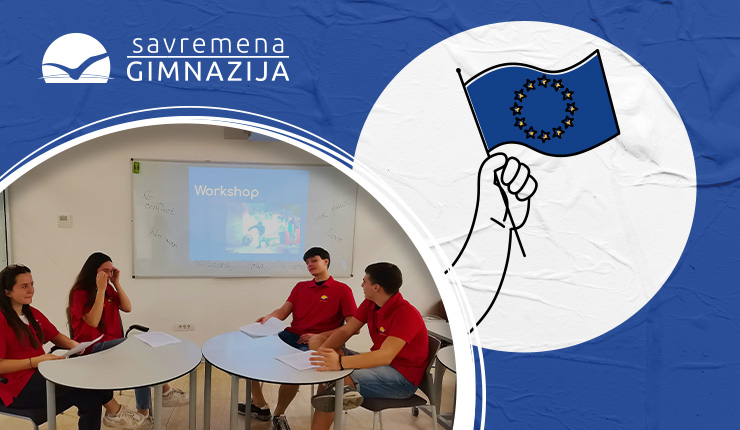
As with every year, Savremena Gimnazija strives to commemorate important dates during the school year in an engaging and educational manner.
To mark the European Day of Languages, which is celebrated on 26 September, Professor Milica Aleksić traditionally prepares exciting activities for students, tailored to their age.
First and second grade – vocabulary testing in English
This year, first-year students learned numerous interesting facts about the English language – from the most difficult tongue twisters to the speed at which new words are created, and even the phenomenon of how our brain processes letters when they are jumbled, allowing us to read misspelt words correctly. The students then tested their knowledge of European languages in a quiz and also had fun trying to recognise different languages after listening to short dialogues.
Second-year students were given a task that was not only beneficial but also a good deed – something we recommend to all teachers when they have a little extra time in class. Using their mobile phones, students tested their vocabulary knowledge in English on the website freerice.com. What sets this game apart is that every correct answer contributes 10 grains of rice (or the equivalent value) donated by UNICEF to those in need through the World Food Programme.
Third grade – interdisciplinary workshop in English
Since this year’s European Day of Languages was dedicated to peace, third-year students tackled more serious topics in an interdisciplinary manner, approaching the subject from a philosophical perspective with Professor Marica Đurić. In English, they had a workshop on hate speech, manipulation in the media and on social networks, and how all of this affects both global peace and our own inner peace. Through role-playing and a workshop approach, students explored who becomes a victim of hate speech and how to fight against it. In their philosophy class, they delved deeper into the issues of manipulation, belief, freedom of speech, and the limits and responsibilities that come with expressing oneself.
We believe and demonstrate through these examples that learning in the context of the time and environment is the most effective way to learn.

















